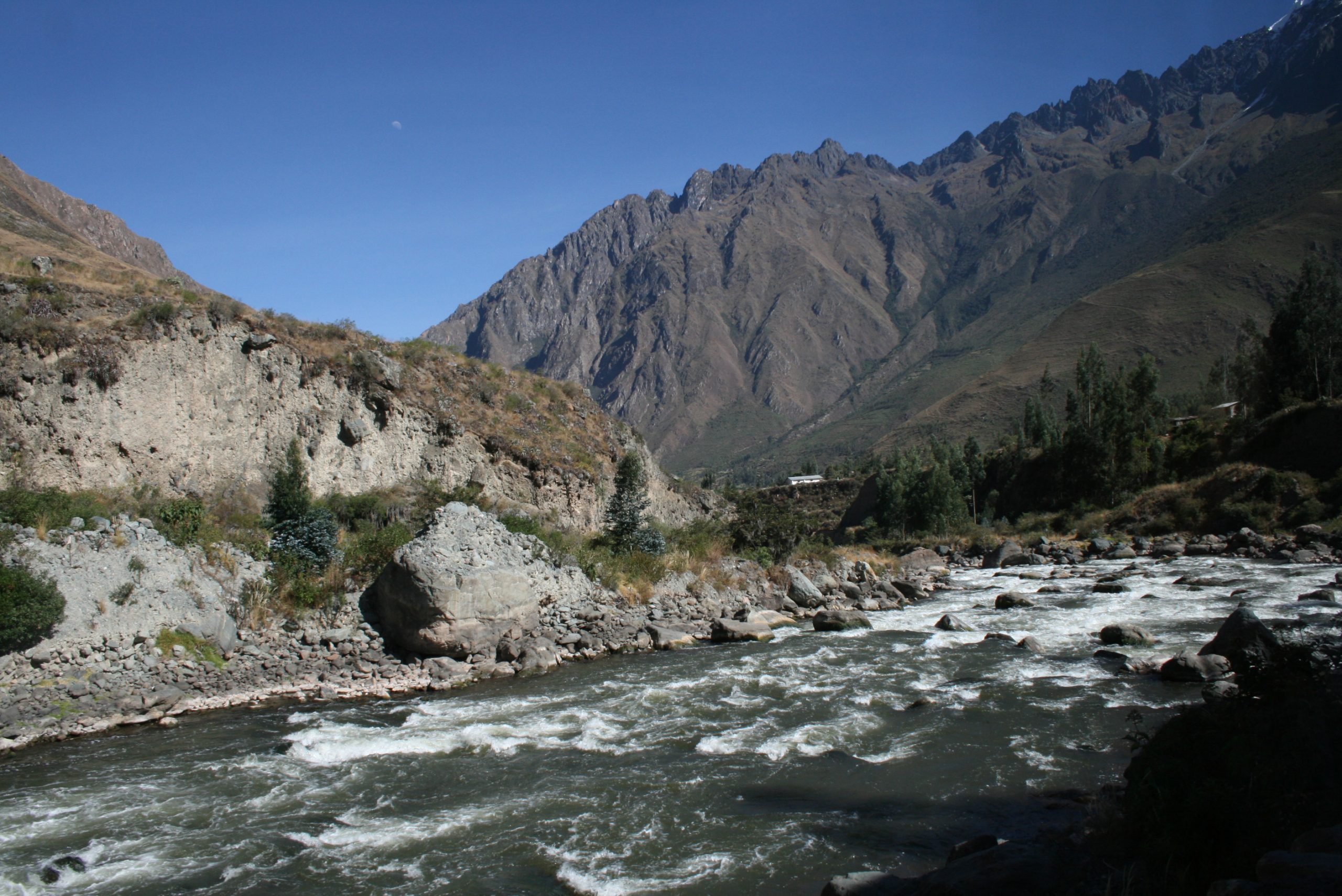
It is 13th June 2009 and I am exhausted, partly due to a nightmare of a bus journey and partly to the altitude of the town of Cusco where I have arrived.
My decision not to push Bridget through the Nazca to Cusco route has been vindicated. I did catch a bus, actually a very modern ultra smart Marcopolo coach, which took almost nine hours to cover the first 250 miles of the road which we had turned back from. Even with the size, weight and suspension of the bus, I still felt every bump. Knowing the driver was Peruvian and that the drop at the side of the road was often 2,000 feet didn’t help either. I am convinced Bridget would not have made it too, and return from, Cusco had we pushed on.
It is a great shame because the last 200 miles was generally as good as the Pan American Highway has been and Bridget would have been made so ‘at home’ in Cusco. It is a pretty town of around 400,000 inhabitants, lots of history, plenty of colour and some pleasing architecture. However the altitude does take a little getting used too. It affects people differently and I find I am both breathless and my chest feels constantly strained. The locals take lots of cocoa extract typically around half a kilo each per day, usually either chewed or in tea and that helps considerably. I should think after that they’re beyond caring!
The mountains in this part of the Andes are completely different to the west coast side in that they are covered in vegetation and considerable areas are cultivated. Given that some fields can be as high as 18,000 feet and can be on a slope in excess of 60º everything is done by manual labour, unless they have found out how to harness goats!
To get to Machu Picchu from Cusco I took a train ride of around three hours. It is fascinating to see the lifestyle of the farming community and the small towns and villages on route. The standard of living appears far better than I had imagined and the Peruvians do seem adept at taking some of the more desirable items of modern society but retaining many of their traditional things.
The scenery becomes increasingly awe-inspiring the closer to Machu Picchu the train gets and the mountains start taking on the shape and appearance of that normally associated with this location, almost steeple shaped and covered in lush vegetation. Then the first of the Inca ruins comes into view as the train pulls to a halt.
There are photo galleries of both the journey and the site of Machu Picchu which are far better than my attempts to describe everything. For those that aren’t familiar with the history the name is in fact that of the mountain and the name of the Inca city was lost in the depths of time. Evidently the name means ‘whole mountain’.
The Inca period is much younger than I thought, scanning from 1400 to 1500 AD. Nobody knows why, but the inhabitants abandoned the settlement just before the Spanish Conquistadors arrived and the jungle reclaimed it so that, other than some local farmers, it became a ‘lost city’. It was rediscovered by Hiram Bingham in July 1911 whilst searching for a completely different Inca city.
Tonight I return on the nightmare bus service to Nazca to be reunited with Bridget and get back on the road. I n the meantime I walked into the main square where there were crowds gathering, lots of locals in traditional costumes and countless groups of children, all dancing to the beat of drums and Indian pipes. Evidently it is a rehearsal for the Inti Raimi or Sands Party.
The emphasis is clearly on children which are a central part of the culture here and is a timely reminder of one of the main objectives of this website. Once again, please give whatever you can to help us towards our objective which we are still a long way from achieving for UNICEF. Just click on the logo on the right of the page, it’s really easy and quite painless.
It’s almost our first birthday!